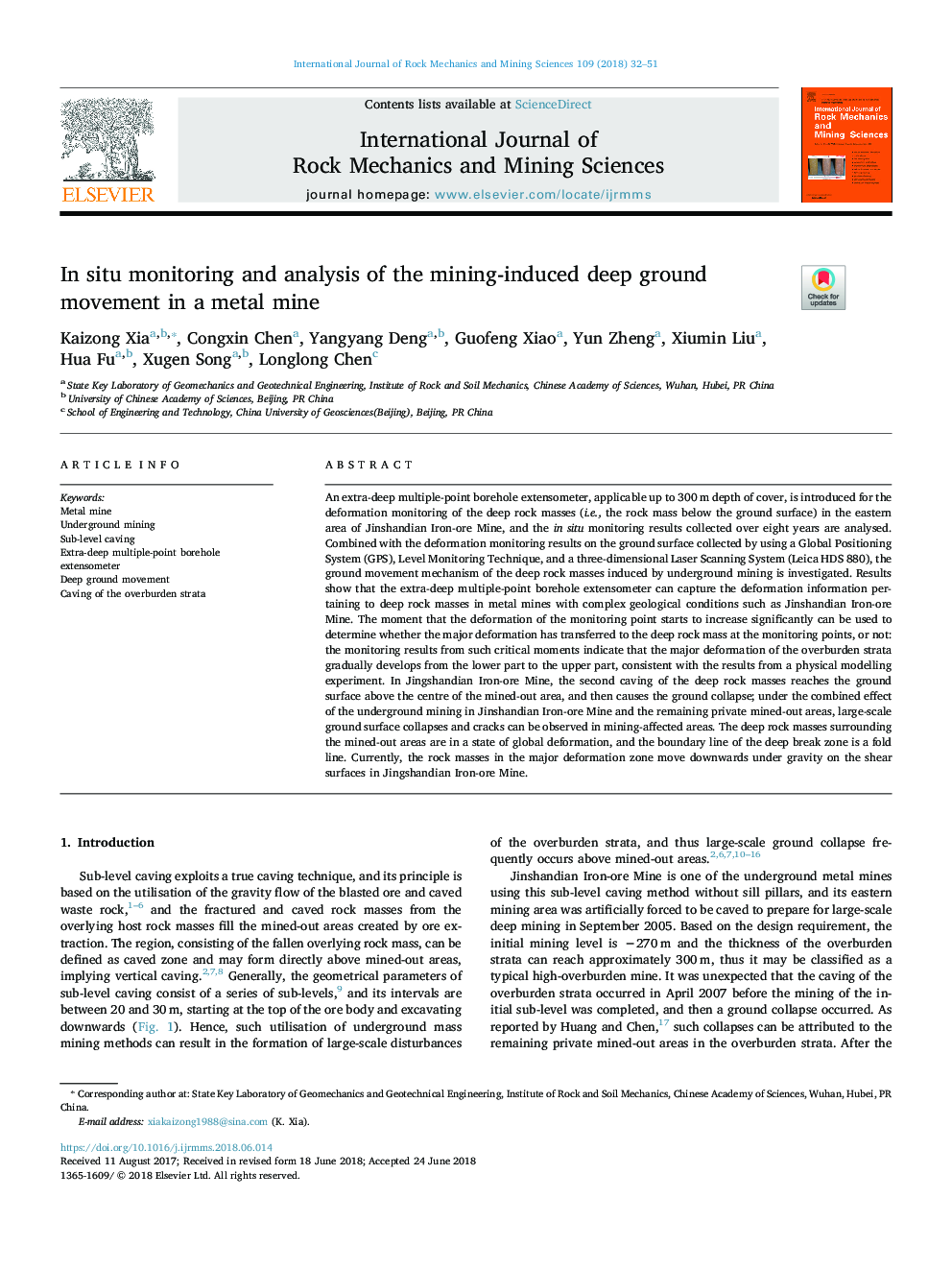| Article ID | Journal | Published Year | Pages | File Type |
|---|---|---|---|---|
| 7206097 | International Journal of Rock Mechanics and Mining Sciences | 2018 | 20 Pages |
Abstract
An extra-deep multiple-point borehole extensometer, applicable up to 300â¯m depth of cover, is introduced for the deformation monitoring of the deep rock masses (i.e., the rock mass below the ground surface) in the eastern area of Jinshandian Iron-ore Mine, and the in situ monitoring results collected over eight years are analysed. Combined with the deformation monitoring results on the ground surface collected by using a Global Positioning System (GPS), Level Monitoring Technique, and a three-dimensional Laser Scanning System (Leica HDS 880), the ground movement mechanism of the deep rock masses induced by underground mining is investigated. Results show that the extra-deep multiple-point borehole extensometer can capture the deformation information pertaining to deep rock masses in metal mines with complex geological conditions such as Jinshandian Iron-ore Mine. The moment that the deformation of the monitoring point starts to increase significantly can be used to determine whether the major deformation has transferred to the deep rock mass at the monitoring points, or not: the monitoring results from such critical moments indicate that the major deformation of the overburden strata gradually develops from the lower part to the upper part, consistent with the results from a physical modelling experiment. In Jingshandian Iron-ore Mine, the second caving of the deep rock masses reaches the ground surface above the centre of the mined-out area, and then causes the ground collapse; under the combined effect of the underground mining in Jinshandian Iron-ore Mine and the remaining private mined-out areas, large-scale ground surface collapses and cracks can be observed in mining-affected areas. The deep rock masses surrounding the mined-out areas are in a state of global deformation, and the boundary line of the deep break zone is a fold line. Currently, the rock masses in the major deformation zone move downwards under gravity on the shear surfaces in Jingshandian Iron-ore Mine.
Keywords
Related Topics
Physical Sciences and Engineering
Earth and Planetary Sciences
Geotechnical Engineering and Engineering Geology
Authors
Kaizong Xia, Congxin Chen, Yangyang Deng, Guofeng Xiao, Yun Zheng, Xiumin Liu, Hua Fu, Xugen Song, Longlong Chen,
